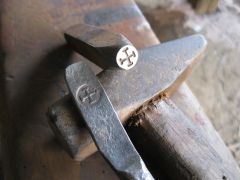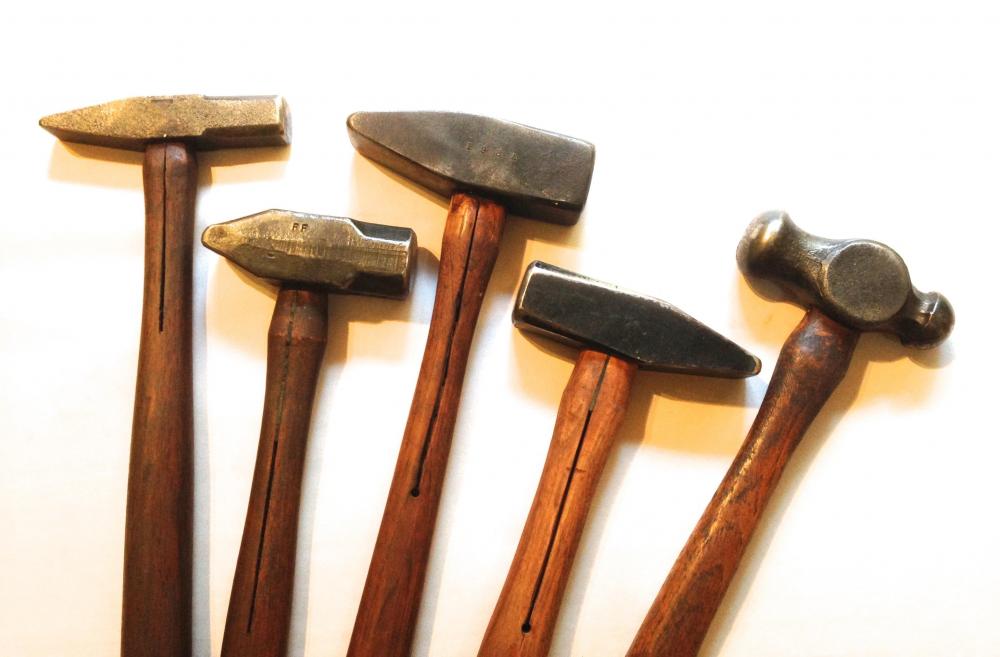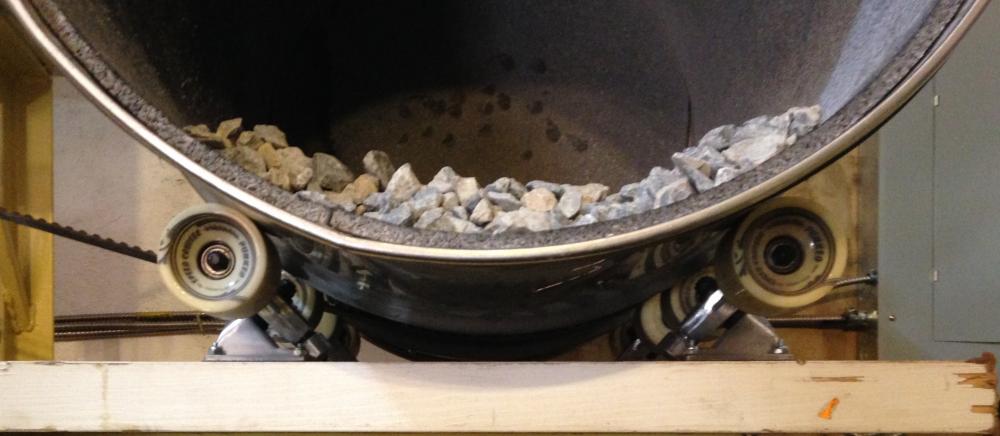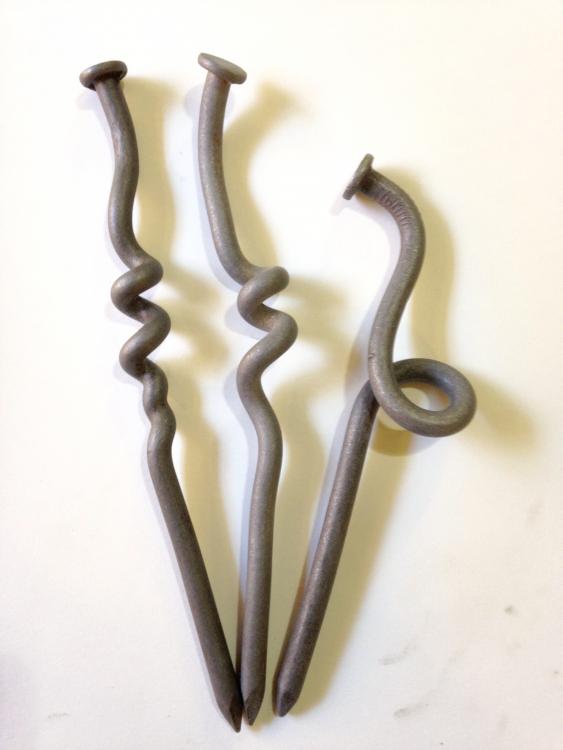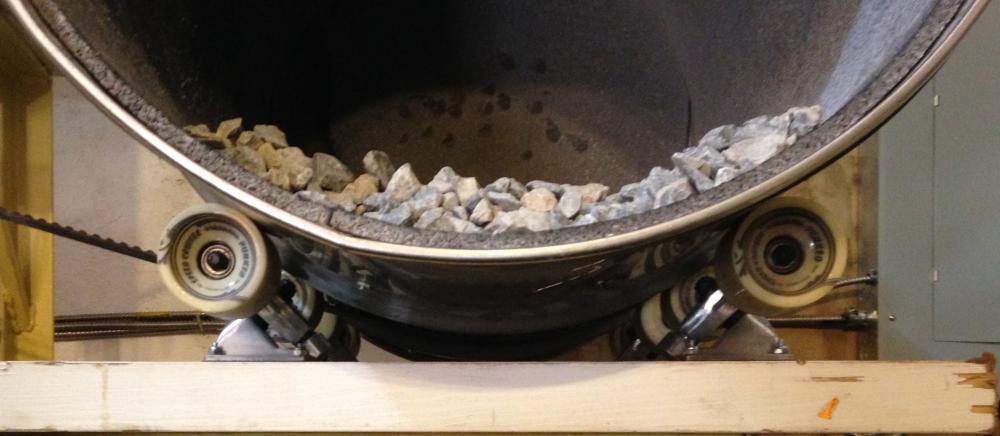-
Posts
39 -
Joined
-
Last visited
Content Type
Profiles
Forums
Articles
Gallery
Downloads
Events
Everything posted by John Ditt
-
-
I am revisiting IForgeIron after an absence. I have developed a prototype tumbler that is low-cost, quiet, large and effective and that does not require welding or machining. The tumbler has a 50-gallon stainless or steel barrel atop four pairs of long skateboard wheels. The interior of the barrel, including the two ends, is lined with hard rubber sheet, about 0.5 inch thick. There are no interior baffles. The polishing media are small bits of steel. But, the forgework is pickled first in citric acid to remove/loosen mill scale and forge scale. Let me know if you wish to receive more information or photos. What my research of industrial literature revealed is that the polishing action is not by falling (via baffles) or by tumbling, but rather by sliding. So the forgework is sliding across and with the polishing media.
-
Does anyone have knowledge and history of the quilt for the 1988 ABANA conference, likely auctioned to raise funds? It has appeared in a thrift store in New England. On the quilt are the names of the makers: Made for ABANA by Kathy Woolridge Kitha Kierbow Lorraine Humble Pam Howard Jean Hale Cordelia Daniels Pam Caublesmith 1988
-
The attached photos show hammer handles with a saw kerf in the upper third. This allows the hammer handle to flex, absorbing the shock of the blow. Before attaching the head, a gasket sheet from the auto store is inserted within the kerf through the head and for one inch of the exposed handle, in order to keep the kerf from closing. One can drill a small hole at the base of the kerf to retard any splitting of the wood. The handle, up to the head, is soaked in linseed oil for one week in order to add more flexibility. One can retrofit a hammer with handle by using a cut-off blade on an angle grinder to create the kerf. It was Beau Hickory who presented this handle adaptation at the 1980 ABANA Conference. Francis Whitaker also claimed provenance. I shall be composing an article on this handle for ABANA Hammer's Blow.
-
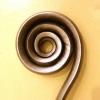
List of power hammers in North America
John Ditt replied to Glenn's topic in Power Hammers, Treadle Hammers, Olivers
Additions include Allen Lakes' collection, Tom Troszak's restart of the Bull hammer, and Tom Troszak's insights on hammer selection and testing. -

List of power hammers in North America
John Ditt replied to Glenn's topic in Power Hammers, Treadle Hammers, Olivers
Xixch, The List includes new and used power hammers and, thus, those no longer being made in USA or beyond. Additions are 1) Cricket DIY air by Dave Hammer and 2) TZunfa new self-contained air from Canadian Blacksmith Supply. -

Tumbler Prototype - Quiet, Large, Simple, Effective
John Ditt replied to John Ditt's topic in Grinders, Sanders, etc
Thanks, SLAG. I'm not one to discuss the electrostatic precipitators. You might create a new topic under the proper subject. -

Tumbler Prototype - Quiet, Large, Simple, Effective
John Ditt replied to John Ditt's topic in Grinders, Sanders, etc
Thanks, Glenn. In regards to paddles, the industry literature describes how the work should slide across and with the media rather than tumble or fall (due to paddles). This sliding of the work is not the sliding/slipping of the media. The hexagon interior of rotary tumblers serves to prevent the sliding/slipping of the media. To date, the lining of my circular tumbler by the rubber mat seems to allow for the sliding/tumbling and to prevent the sliding/slipping of the media. In time, I shall place a acrylic sheet in lieu of the steel lid of the drum in order to video film the tumbling inside the drum. I am thinking of attaching a vacuum hose to the very center of the drum's back end to remove the dust. -

List of power hammers in North America
John Ditt replied to Glenn's topic in Power Hammers, Treadle Hammers, Olivers
Updated - List of Available Power Hammers in North America New & Used ... Commercial & Do It Yourself ... Mechanical & Air As compiled by John Dittmeier, October 10, 2017. link removed as per TOS -

Tumbler Prototype - Quiet, Large, Simple, Effective
John Ditt replied to John Ditt's topic in Grinders, Sanders, etc
Frosty, Since the motor is 1/2 HP, I am striving for a moderately low weight load of work and media. Steel cut-offs that would fill one-third to one-half of the 55 gallon drum would be too heavy for the motor and the pulley system, I believe. Thanks for the idea of sawdust and/or sand; I know that the brass polishers use walnut shells, available from pet stores. This tumbler turns at 21 rpm. There is no lifting lug. I created a hinged door in the drum's lid. -

Tumbler Prototype - Quiet, Large, Simple, Effective
John Ditt replied to John Ditt's topic in Grinders, Sanders, etc
Svarttrost, Greetings to you in Finland, where I worked in the summer of 1972 as part of my college education in civil engineering. It was a factory for the production of aerated concrete panels and blocks, in the suburbs of Helsinki. Between February and August 2017, my development of the tumbler was dormant. The first tumbling media was industrial ceramic, but this particular media is intended for vibratory tumblers. The second tumbling media was 'drainage rock' as shown in the first photograph. But, both of these media fractured and generated thick dust. So, I have started an experiment of aluminum bits as the tumbling media. Remember that the task is to remove the dust of the scale after pickling in citric acid. I am shearing aluminum rod and angle to create bits and flattening, shearing and bending soda and beer cans. By December, I should know the effectiveness of the aluminum bits in removing the scale dust and polishing the bare steel. -

List of power hammers in North America
John Ditt replied to Glenn's topic in Power Hammers, Treadle Hammers, Olivers
I created and maintain the PDF List of Power Hammers. Please respond below with any additions or revisions. Thank you. -

Building my own power hammer
John Ditt replied to renaissance man's topic in Power Hammers, Treadle Hammers, Olivers
Late response: I created and maintain the attached PDF List of Power Hammers, including DIY mechanical and air. List of Power Hammers 12-29-16.pdf -

Looking for 120 ib Tire hammer plans
John Ditt replied to Ironton's topic in Power Hammers, Treadle Hammers, Olivers
I am attaching the PDF List of Power Hammers, in which I listed tire hammer references. List of Power Hammers 12-29-16.pdf -

What is the latest Kinyon Design
John Ditt replied to FlyingXS's topic in Power Hammers, Treadle Hammers, Olivers
For Face book groups and now for IForgeIron, I created and maintain the attached List of Power Hammers, in which I have listed New Kinyon references. List of Power Hammers 12-29-16.pdf -

Tumbler Prototype - Quiet, Large, Simple, Effective
John Ditt replied to John Ditt's topic in Grinders, Sanders, etc
With this tumbler design and others, you can skip the pickling and add more tumbling time. -
I developed a prototype tumbler in early 2016 and shall attempt to complete the project in early 2017. I intend to produce plans, including a formal video, as a fundraiser for nonprofit smithing associations. The tumbler is simple and low cost to build, fairly quiet, large and effective. The noise level in the video is greater than that in reality. First step is to pickle the forged work in food-grade citric acid for 12 to 24 hours and then to neutralize the acid upon the work in a baking soda solution. The pickling causes the forge scale to become dust like. A rubber mat lines the interior of the 55 gallon drum and its two ends. Media to date has been 'drainage rock' from Lowe's; the rock is deeper than that shown in the photo. Tests have been both dry and wet tumbling. The photo of bent nails show the results after just 20 minutes of tumbling. Fontana_Forge_Tumbler_Video_01-16.m4v
-
Since I have been away from IForgeIron, this is a late reply. My prototype tumbler is large, quiet, low cost and easy to build. First step is to pickle for 12 to 24 hours in food grade citric acid and neutralize in baking soda solution. The tumbling serves to remove the dust that the scale has become from the pickling. The cylindrical interior of the 55 gallon barrel and its two ends are lined with a rubber mat. For now, I have used 'drainage rock' from Lowe's for the media. It's a fair action on removing the scale dust. IMG_0068_2.m4v This photo shows the interior.
-

Home build induction heater
John Ditt replied to Daniel.85's topic in Induction Heating, Oil forges, etc
No, to my understanding. ReactorForge's github shows one change three months ago. -

Home build induction heater
John Ditt replied to Daniel.85's topic in Induction Heating, Oil forges, etc
I note that Josh, the creator of this induction forge, has updated his github site, reached via ReactorForge site, twenty five days ago. That update lets us know that he is still active. -
In a recent posting under Facebook group 'Blacksmith Forges...', a Nathanael Brandt posts the following with photos, though without photos of his burner/blower arrangement. Members of the group are awaiting his details: 'I have been building and tweaking burners for the last year or so that run on unfiltered waste oil. Whether veggie oil or used motor oil (trans fluid, diff. fluid and gear oil also) I think I've finally got a burner that not only is controllable its finally giving me a 95% burn with very little smoke. The oil is gravity fed into the mixing tube where air from a large blower is plumbed into the burn chamber. That is it, no air compressor, oil pump or finicky filtration system to keep from clogging atomizing nozzles.'
-

Home build induction heater
John Ditt replied to Daniel.85's topic in Induction Heating, Oil forges, etc
Others and I were wondering if you, Josh, were still active. I was about to post that you have updated the GitHub 30 days ago with a hardware list. Thank you for continuing to pursue this project. We await your first round of kits. Say hey to Daniel. -

New ribbon burner forge Things that I learned....
John Ditt replied to territorialmillworks's topic in Ribbon Burners
Thank you for the research and development. -

Home build induction heater
John Ditt replied to Daniel.85's topic in Induction Heating, Oil forges, etc
For myself, I remain interested and patient for ReactorForge to complete your enterprise in induction heating. -

Home build induction heater
John Ditt replied to Daniel.85's topic in Induction Heating, Oil forges, etc
Thank you, Induction Brothers. As with workshops to build Rob Gunter's recuperative forge and Clay Spencer's treadle hammer, I foresee regional groups to purchase items in quantity and to fabricate your induction forge at a joint workshop. I shall likely host a workshop in the Washington, DC area.

